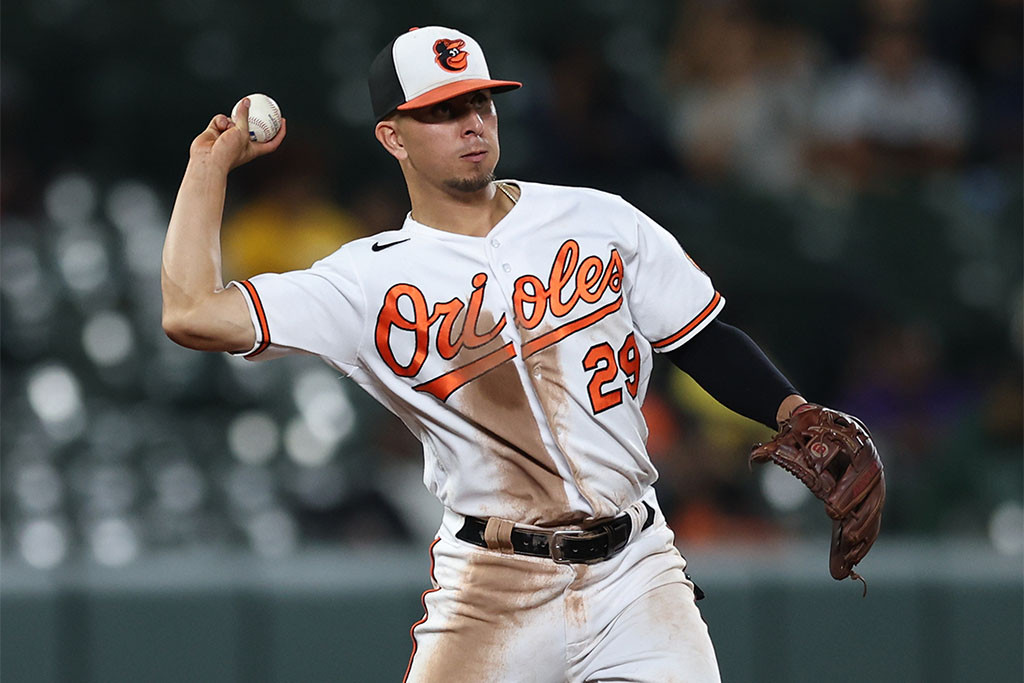Armchair general managers stayed busy in the early days of the offseason. Imagine how hectic it’s become with the free agent and trade markets wide open and the Winter Meetings approaching.
Your mistakes can’t cost you a job that you don’t actually have, which makes it a sweet gig.
I already posed five questions: whether you’d re-sign first baseman Jesús Aguilar, whether you’d pick up Jordan Lyles’ $11 million option (the Orioles didn’t), whether you’d trade an outfielder, whether you’d stay in-house for a backup catcher, and whether you’d attempt to re-sign Rougned Odor.
Here are two more:
Would you stay in-house for a shortstop?
Four of the top five free agents are shortstops, according to the MLBTradeRumors.com rankings – Carlos Correa, Trea Turner, Xander Bogaerts and Dansby Swanson. The cheapest contract projection is Swanson’s seven-year, $154 million deal.
We know it isn’t going to be easy on your budget.
We know that spending on one of these shortstops is going to prevent you from doing much of anything else.
Executive vice president/general manager Mike Elias warned in a Nov. 11 interview with MASNsports.com that “we need to be mindful that we’re not going to go from zero miles an hour to 60 miles an hour in one offseason. We’ve got to build the team and build the payroll in a methodical and strategic fashion …” But you, the fan, are pretending to be in charge. Don’t let me or anyone else influence you.
The alternatives, of course, are to keep Jorge Mateo at shortstop or make Gunnar Henderson, Ramón Urías, Joey Ortiz or Jordan Westburg the primary starter. That’s staying in-house.
Maybe it’s a shared arrangement. Roster flexibility allows for constant movement around the infield. Today’s shortstop might be tomorrow’s second or third baseman.
Maybe you envision that flexibility at second and third, with a superstar shortstop in between. A really big bat for the lineup. And an infield prospect or two could be packaged in a trade for an ace starting pitcher.
What are you doing at shortstop?
Do you make at least one selection in the Rule 5 draft?
The Orioles have a rich history of participating in the Rule 5 draft. One, two, even three picks in the 2017 major league phase. If only they knew what would happen with Nestor Cortes Jr., who returned to the Yankees. Twice, actually.
They hit big in 2016 with Anthony Santander, a high Single-A outfielder in the Cleveland system who needed shoulder surgery. Infielder Ryan Flaherty, taken from the Cubs in 2011, turned into a useful utility player, and future Padres hitting coach. Left-hander T.J. McFarland, selected from the Indians (pre-name change) in 2012, was a favorite of manager Buck Showalter for his ability to consume innings. Joey Rickard (Rays, 2015) was a decent extra outfielder for four seasons, providing needed speed. And Tyler Wells (Twins, 2020) was a promising late-inning reliever who became a promising starter and what appears to be quite a steal.
With a declining payroll, it made sense to mine for inexpensive talent in the Rule 5.
The spending restrictions aren’t as severe this offseason. There also aren’t as many gaping holes in the roster. The farm system is so much better. And the Orioles no longer hold the first pick after finishing above .500.
These are solid reasons to pass, but the Orioles have two openings on the 40-man roster, so they’re allowed to play. They might find an intriguing talent who’s worth bringing to camp.
It’s a low-risk proposition.
It comes down to whether you think it’s worth using one or more 40-man spots. If you think there’s a chance that a selection can win a job on a team that’s vying for a playoff berth, which obviously has happened in the past under the old regime.
Do you pick or pass?
By accepting you will be accessing a service provided by a third-party external to https://www.masnsports.com/





